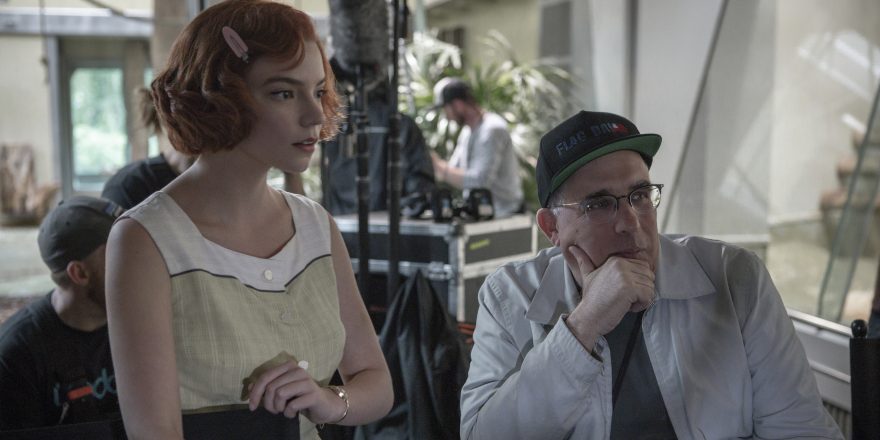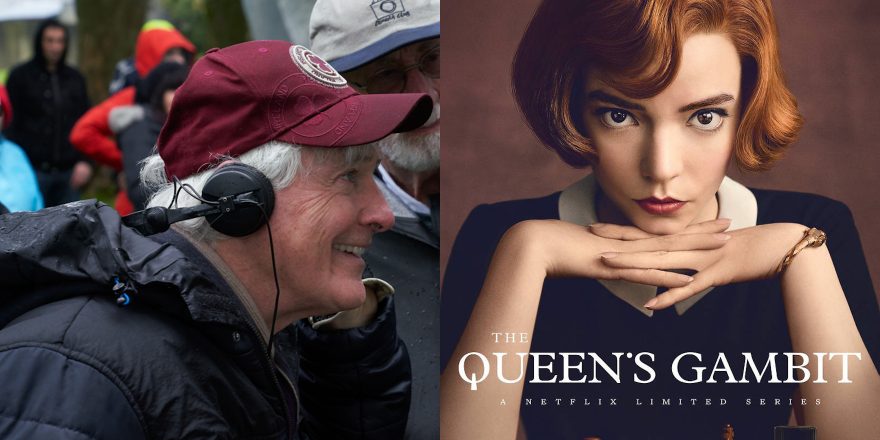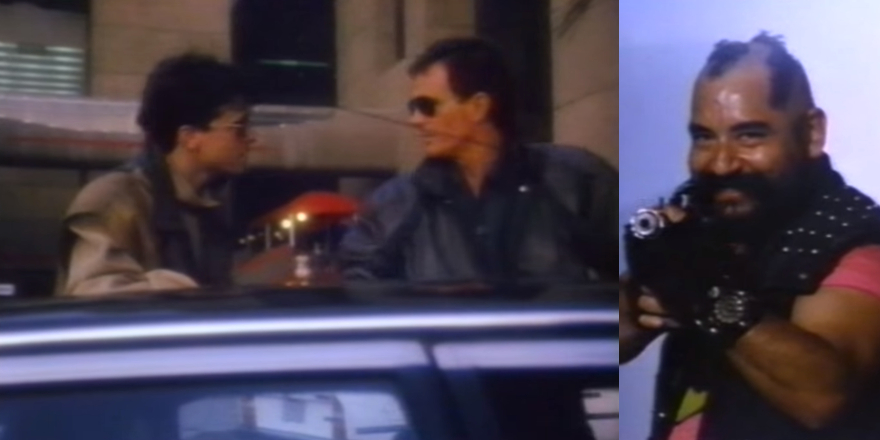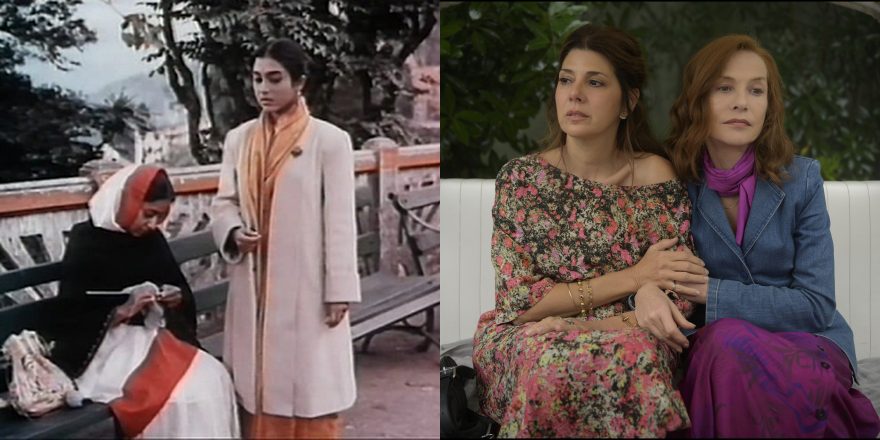Chess has long been used as a metaphor for life. It requires patience, sacrifice and strategy. It has an infinite number of possible moves, a version of free will. It has elite pieces that hold the most power, conservative pieces that always stay on the same color squares, liberal pieces that enjoy the freedom to move around, a working class of pawns who are dangled a rare chance of upward mobility to transform into a Queen. In the words of the famous 19th Century agnostic Thomas Huxley: “The chessboard is the world, the pieces are the phenomena of the universe, the rules of the game are what we call the laws of Nature. The player on the other side is hidden from us.”
Chess can also be a useful metaphor for producing films and television. It’s a long game. Every act of moving forward is a decision. The ability to think several moves ahead is critical to success. Mistakes are inevitable; having the flexibility to pivot, and to learn from them, is a fundamental part of the process. When do you sacrifice? What is your end game?
I never imagined two stories set in the world of competitive chess bookending my career as a producer. I’m not a chess player. But I love books and stories, and in each case, with Fred Waitzkin’s memoir Searching for Bobby Fischer and Walter Tevis’ novel The Queen’s Gambit, it was the characters and their stories that first drew me in to their insular microcultures of obsessive prodigies playing beautiful mind games.
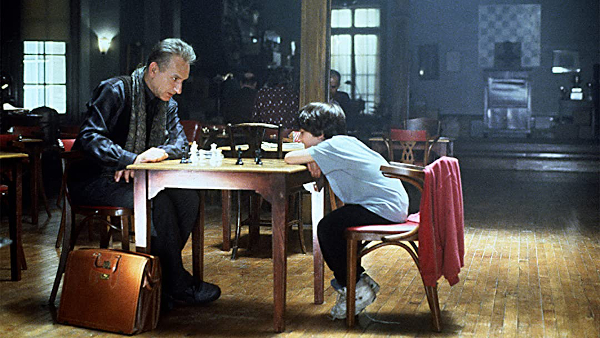
In Bobby Fischer a father discovers his son has a gift – “He’s better at this than I’ve ever been at anything in my life. He’s better at this than you’ll ever be, at anything” – and as brilliantly adapted and directed by Steve Zaillian, it draws him into a surprising family crisis about parenting, about competition, about friendship, morality, and finally … decency.
The author Michael Ondaatje first introduced me to Tevis’ novel, not because it involved chess, but because he said it was a book that he read every couple of years for its impeccable craft – “to remember how to write” was how he put it – and as Ondaatje himself is no slouch with a pen, it made me intensely curious, who was this muse’s muse?
Like a lot of people, I only knew of Tevis because several of his books had been adapted into movies, starting with The Hustler, which I remember watching as a kid on our black-and-white TV set, and later The Man Who Fell To Earth, and The Color of Money. But I hadn’t actually read him, and I knew very little about the life of the man who created characters like “Fast” Eddie Felson. Only later did I learn about Tevis’ time institutionalized in Kentucky in his youth, his introduction to tranquilizers by the state, his amateur interest in competitive chess and his life-long struggle with alcoholism; I realized how much of his own story he had put into this tale of an orphaned, addicted girl who discovers her genius at chess. The Queen’s Gambit, in some ways his most personal book, was also one of his last. He died of cancer at age 56 in 1984.
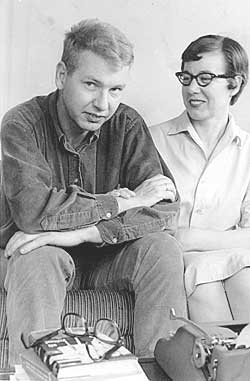
If character is destiny, then Tevis’ greatest creation Beth Harmon – brilliant, clueless, sexy, nerdy, vulnerable, killer, lonely, curious, keenly insightful, tone deaf, addicted, addictive – is destined to a life of wrestling with her demons, both real and self-imposed. Ondaatje was right. From the first page, sentence by sentence, Tevis the craftsman hooks us into this fascinating young woman’s story, having us walk in her shoes, taking us to places we don’t expect to go, daring us to stop turning the pages to find out what happens next.
Even by the Sisyphean standards of many Hollywood projects that traverse long journeys up steep slopes to get to the screen, The Queen’s Gambit was in rare company. The Scottish producer and screenwriter Allan Scott optioned the book in the early ’90s (around the time my first son was born). I joined up with him at the beginning of the 21st century. The show was released by Netflix in 190 countries on October 23, 2020. My son will turn 30 next year. In between lies this story, a story about hands. The hands we are dealt. Helping hands along the way. And the hand double.
For the first 20 years of the project’s existence, The Queen’s Gambit, which had been adapted into a screenplay by Allan, was intended as a feature-length motion picture, because movies shown in movie theaters were still at the top of the entertainment food chain back then. Filmmakers as diverse as Bernardo Bertolucci, Michael Apted, Tom Tykwer, Marc Forster and Frank Oz were all attracted to and/or attached to direct the project at various times. The Jerry Weintraub Company apparently came close to making a film version starring then-teen sensation Molly Ringwald. Tykwer dropped out when another project based on a book he loved, Perfume: The Story of a Murderer, was offered to him. The closest The Queen’s Gambit came to actually getting made was when the actor Heath Ledger decided to make it his directing debut. He was going to also play Benny Watts, and his celebrity and stature alone almost got it to the finish line. It was a dark and bitter irony that this brilliant actor died of an overdose just a short time before he was meant to start pre-production on Tevis’ story of genius and addiction.
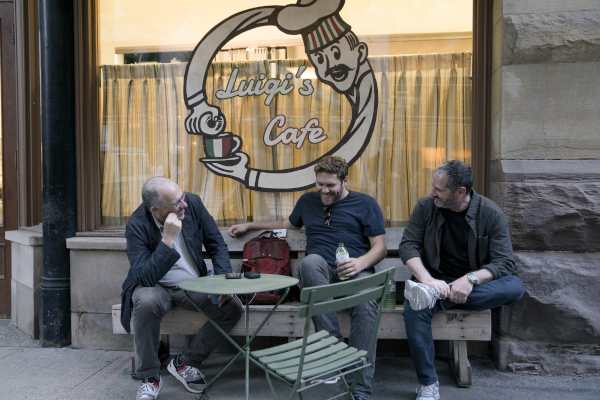
I even gave the book to Scott Frank all those years ago. He had recently made the transition from successful screenwriter to directing his own work with his debut film, The Lookout. I had known Scott since my days as a studio executive at Paramount in the ’80s. He had an office on the lot in the Writer’s Building, where he was writing the screenplay of what eventually became the Kenneth Branagh-Emma Thompson movie Dead Again. We had bonded over our mutual love of film noir (Laura), crime fiction (Charles Willeford) and our creative muse and mentor (Senior Paramount V.P. Lindsay Doran).
I had a hunch the novel would resonate with Scott. One of his earliest screenplays was for the movie Little Man Tate, directed by Jodie Foster, which also looked at childhood genius, albeit from a different angle. Scott loved the Tevis novel and felt it was a more sophisticated way for him to explore the theme of the cost of genius. But as hard as we hustled to find a home for it, we met the same fate as all of the other attempts to turn The Queen’s Gambit into a movie. The various mandarins who held the power to say yes to a green light didn’t agree on much, but they all agreed on one thing: a period story about an orphaned young girl who was addicted to tranquilizers and chess was almost comically uncommercial.
While it may seem perverse to call a project that took 30 years to get made the beneficiary of good timing, in crucial ways it is accurate. As the market for independent films started contracting after the financial crisis of 2008, a new company that had started out in the business of renting mail-order DVDs to subscribers was evolving into a streaming giant with close to 200 million global subscribers. The rise of Netflix as the largest content creator and entertainment consumer data collector the world has ever seen, and the gradual proliferation of competitive streaming platforms backed by Apple, Amazon, Disney, TimeWarner and eventually all of the world’s largest media companies, would radically rewrite the rules of the whole industry.
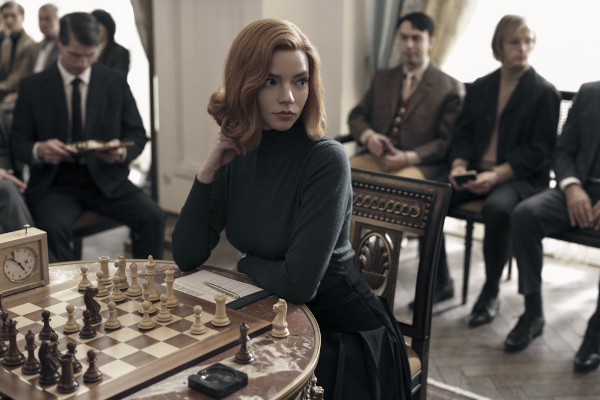
Movie theaters. Television. Computers. Tablets. Telephones. The Walls of Jericho came tumbling down. Filmed stories in any form became “content”. Where we viewed them were just different “screens.” The audience was discovered to be “platform agnostic.” The promise was to watch whatever you wanted, whenever and wherever you wanted. Binge-watching meant that distinctions like scheduling, formats and running times were no longer relevant. But perhaps the deepest change of all was the redefinition of success itself. In an industry where for generations the public reporting of Nielsen ratings and weekend box-office gross ticket sales were the only metrics that mattered, suddenly the name of the game was accruing and retaining subscribers, not only in order to collect their monthly fee, but to harvest their eyeballs, attention and data.
It was the advent of this brave new world of platforms and formats that finally changed the prospects for our little chess drama. Scott Frank had turned an original screenplay he had written years ago as a movie into the feminist Western Godless, which was Netflix’s first foray into the limited series format. The critical and presumably commercial success of the show (the real numbers are private and not shared with talent or the public) led Netflix to want to extend their working relationship with Scott. When asked what he wanted to do next, he remembered The Queen’s Gambit, and called me to ask if the rights were still available. I said I’d check in the back of my freezer, but I was sure they were still in there somewhere, covered in permafrost.
Scott’s idea to pivot from the movie format Allan and I had been pursuing for all these years to the more expansive, novelistic format of the limited series was the creative key that unlocked the whole show. It meant starting over from the novel and creating a new multi-part adaptation of the story. Rather than a conventional underdog sports narrative set in an arcane world (“Rocky with Chess” was how it had been waggishly described), we could now fully lean in to the human story of this young girl’s remarkable emotional journey through loss, loneliness, alienation, adoption, addiction, resilience and reawakening, while exploring the social context of the Cold War era and of a woman confronting the patriarchy and casual misogyny of that time and place. Despite the quality of the material and the good will towards the creative team, it was still a surprise when Netflix said yes to the show after all of the rejection we had faced. Still, they candidly told us that they saw the audience for this as a small target, and proposed a budget to Scott that was less than half of what he’d had to make Godless. But we were happy to finally come in from the cold.

My first call when I knew we finally had a real home and a bona fide path to production was to an old friend who I hadn’t spoken to in more than 20 years. Ben Kingsley’s role in Searching for Bobby Fischer was to play Josh Waitzkin’s real-life chess teacher Bruce Pandolfini, a legend in New York chess circles. Pandolfini knew Bobby Fischer and had covered his famous match with Boris Spassky in Reykjavik for television, and had also served as a consultant, actor’s coach and right-hand-man to director Steve Zaillian for all things chess-related on that film. I knew he would be equally essential for Scott, and instrumental to any plans we made to solve the problem of how to put chess on screen so it was realistic but not somnambulistic. At our reunion lunch, he revealed something to Scott and I that I had never heard before: Pandolfini knew Walter Tevis, as he had been brought in by the publisher to work with Tevis to make the chess more accurate in the final draft of his manuscript. They spent a few months meeting regularly, with Bruce feeding him suggested games and moves. Bruce said that in the end, the strong-minded Tevis used none of them, but he did take Bruce’s suggestion for a new title for the book. Scott was flabbergasted. “Wait, we’re sitting with the guy who came up with the name of The Queen’s Gambit?” It was a most auspicious beginning for what became a key relationship for Scott (Bruce later introduced him to Garry Kasparov, perhaps the greatest player of all time, who also consulted on the series), and the rekindling of a warm friendship for me.
Beginnings, endings and tone are three of the most important elements of telling any story. Tevis’ novel had a perfect ending. The scene of Beth abandoning her CIA handler to go and play chess with the old men in the park in Moscow, finally at peace with herself, was surprising, inevitable, beautiful, emotional and poetically just. On the other hand, the opening of the book and the opening of the series are quite different. The book opens in media res at the scene of the car crash and Beth’s mother’s death. “Orphaned by yesterday’s pile-up on New Circle Road, Elizabeth Harmon surveys a troubled future.” In our very first script meeting in New York, in a private library at the old Players Club in Gramercy Park, Scott described to Allan Scott and myself the very different opening he had in mind for the show.
“We open in darkness. We hear knocking on a door, and a French voice calling out, “Mademoiselle.” Water sloshing in a bathtub. The clinking glass of discarded wine bottles on the floor. A young woman staggers out of the bathroom, soaking wet, and throws open the curtains to illuminate a fancy hotel room. Where am I? Wait. There’s a person in her bed. Who the fuck is that? The pounding on the door persists. She’s late. She strips and throws on a fresh dress, grabs some pills off the table and downs them with a swig from the leftover dregs of a mini-bar bottle of booze. Opening the door to an impatient Frenchman in uniform, she races barefoot down the hall and stairs, pausing to put on a pair of heels and pull herself together as she enters a silent, elegant ballroom where a hundred heads turn towards her. She walks to a table in the very center of the room. Sitting on top of the table is a chess board. Sitting across the table is her opponent, the Russian grandmaster. Other than the ticking of the already started game clock, you can hear a pin drop.”
When Scott finished, you could hear a pin drop in our library as well. This was not your grandfather’s chess movie. Who was this woman? Who was that body in the bed? Who the hell goes on a sex, drugs and rock-&-roll bender the night before … a prestigious international chess competition? How did she get here? Where does she go from here? Also, by teasing the audience with this foreshadowing of Beth Harmon’s future, he could now flashback to her childhood, knowing that he had introduced our leading lady, and we would carry all of our curiosity about and connections with her into the past, when we meet the actress who is playing the same character at a younger age.
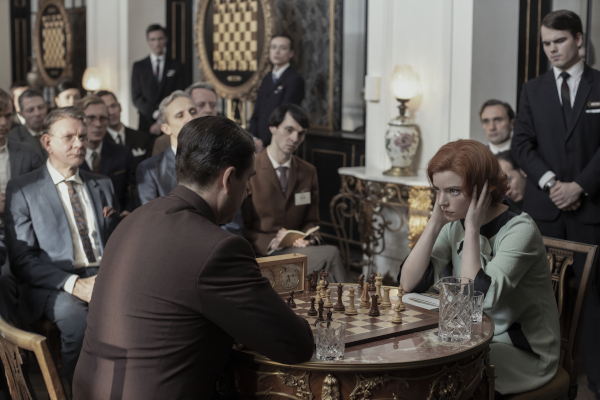
With one structural coup de cinema, Scott had established a way in to telling this story that was sexy, irreverent, funny, surprising, dramatic and mysterious. Rule #1: Find humor in the dark corners of your story. Rule #2: Entertain us, but don’t forget to put a lump in our throat when we least expect it. As a writer, Scott had many mentors along the way – including Lindsay Doran, who I already mentioned, Sydney Pollack and Elmore Leonard – but none that he enjoyed a closer and longer relationship with than the legendary William Goldman, screenwriter of Butch Cassidy and the Sundance Kid, Marathon Man and The Princess Bride, among many others. I could feel him channeling all of them as he wove his tale that day. It was a masterclass in setting the tone.
Setting the tone of the production is equally as important as setting the tone of the story, and just as challenging to control. Finding the sweet spot can often be plotted on an imaginary graph whose axis lines are time and money, and whose variables are appropriate locations, local cast and crew base, extras, labor laws, local tax incentives, weather, travel costs, etc. Scott had a core team of talented key collaborators from Godless that he was bringing with him for Gambit, including his assistant Susan Hsu, composer Carlos Rivera, editor Michelle Tesoro and cinematographer Steven Meizler. But there was one gaping hole he needed to fill.
It’s not often that the choice of production designer becomes the determining factor in where to shoot a film, but in the case of The Queen’s Gambit, one of the most fateful decisions we made was to hire Berlin-based Uli Hanisch to design the show. I had the good fortune to work with Uli early on in both of our careers when we made the movie Heaven in Italy and Germany with the director Tom Tykwer. Uli also came to Serbia with me to design the movie Therese Raquin, based on the famous novel by Zola, where on a very small budget he built an entire 1860s Parisian street, three stories high and 50 meters long, on a soundstage outside of Belgrade. I considered him a genius. When Scott and I were talking about the look of The Queen’s Gambit, one of our shared references for how to do a period show right was the German TV series Babylon Berlin. “That’s exactly the kind of designer I am after,” Scott told me. “Why ‘kind of’?” I said. “Uli’s an old friend, let’s go get that designer.”
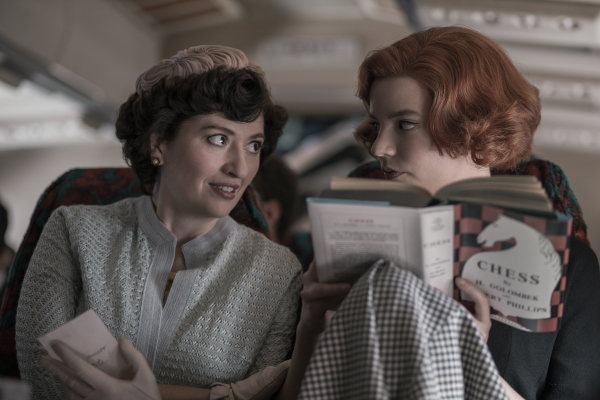
Intuition is a funny thing. As Alma Wheatley said, “It can’t be found in books.” It was hard to explain to Netflix why we were going to Berlin to meet a German production designer and scout the city for locations for our story. When they pointed out that there wasn’t a single scene in the novel set in Germany, I could only smile and nod and say, “You’re right.” For me, it was like finding Cold Mountain in Transylvania, or The Kite Runner in Xinjiang Province in China – sometimes the sweet spot isn’t on any map, it’s more in your gut. Knowing we had to shoot Paris and Moscow in Europe, and knowing Uli and the many assets he would bring to the production – not just his talent, but the whole team of top craftspeople he worked with in props, set decorating, construction, even hair, make-up and wardrobe to build the seamless period look of Babylon Berlin – that “little man in my stomach” was making me curious about what else we might discover if we went over there. As they were throughout the making of the series, Netflix were very supportive partners, and although a bit dubious at first, they allowed that there might indeed be some method to our madness. But it’s no exaggeration to say that all of us found it hard to believe that after our first week of scouting, after walking into a Las Vegas casino and a Kentucky orphanage, a Cincinnati hotel lobby and an American high school gym, we realized that Berlin, almost entirely rebuilt in the Cold War era of our story, was the perfect place to film the series. With Uli’s magic and a little bit of help from our visual effects team, we could do almost the whole show there. Kismet.
We made one other significant discovery on that trip. Through my old friend Tom Tykwer’s production company X-Filme, we met our line producer Marcus Loges, one of the best in the business at his very demanding job. But while I was impressed with him for his forward-thinking acumen, leadership skills and grace under pressure, he was making a very different indelible impression on Scott. With his wild mane of white hair, Marcus already cut a fairly cinematic figure. But when he sat down at a chess board randomly set up in a hotel lobby on one of our location scouts and revealed himself to be a serious amateur player, Scott cast him on the spot to play the role of the aging lion of Russian chess, the grandmaster Luchenko, who Beth defeats in her penultimate match of the Moscow tournament. His gracious concession of defeat – “You, my dear, are a marvel” – is one of my favorite moments of the whole show, not only for its old-world gentlemanliness, but for the private smile I enjoy knowing it’s one of the few great moments in cinema history where a line producer gives a sublime performance in an important supporting role.
I have a simple (or simple-minded) formula for producing anything; you only need a Script, Director, Financing, and Star to have a movie. Like four cherries on a one-armed bandit, getting any combination of three out of four is common. But lining them all up in a row is rare indeed. In our case, we only needed to cast our leading lady to hit the mega-jackpot, and boy, did we ever break the bank.
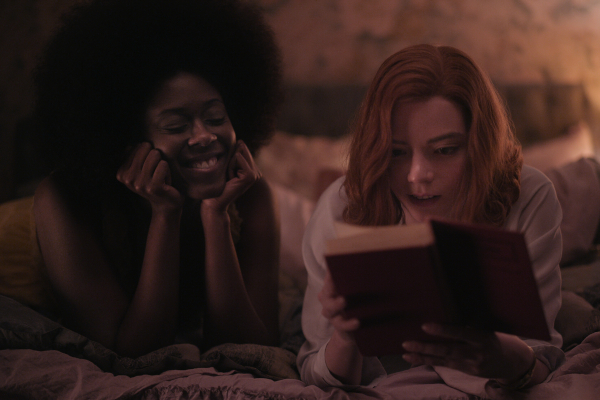
Anya Taylor-Joy was a few years shy of being born when Allan Scott set out on his quest to make The Queen’s Gambit. Now it is impossible to imagine how anyone else could have ever played Beth Harmon. When casting director Ellen Lewis made her first short list of young actresses for Scott to consider for the part, Anya was at the top. While we knew her from her breakout performance in The Witch, Ellen programmed an Anya-fest for us, after which Scott sent her the novel to read. As Anya later confided, she devoured the book in one sitting, literally ran to her lunch with Scott because she was late from finishing the read, shook hands out of breath, at which point they both blurted out, “She’s a redhead,” at the same time. Needless to say, she got the part. It was literally a role she was born to play, and yet another reason the show had to wait for her to grow up in order to get made. Moses Ingram had never set foot on a film set before she arrived in Berlin fresh out of Yale Drama School to play Jolene. Her wise-beyond-her-years nature and refreshing candor made her a perfect foil for Anya, and the chemistry they brought to that relationship made it the beating heart of the series.
And perhaps most improbably of all, Marielle Heller is an acclaimed filmmaker, screenwriter, occasional producer, mom and all-around super-smart creative person. But only Scott Frank, her Sundance Lab mentor on her first feature film, The Diary of a Teenage Girl, knew that before any of that, she had been an actress, and she had everything he was looking for to breathe life and soul into the character of boozy, blousy Alma Wheatley, Beth’s sad but resilient adoptive mother. Bill Camp is one of those actors who is a walking truth machine and good in everything he does. As the janitor Mr. Shaibel, a small role that plays a huge part in the story, we knew he would make a deep impression with every minute he was on screen. Thomas Brodie Sangster was a Godless alumni, so for continuity’s sake, Scott made him Benny Watts, the only U.S. chess champion to ever wear a leather duster and carry a hunting knife. And has anyone ever worn their heart more prominently on their sleeve, just begging to be broken, than Harry Melling as cocky Kentucky chess champ Harry Beltik?
By now, you might legitimately be asking yourself, “But why is this article titled The Hand Double?” And, “What is a hand double anyway?” Well, in order to understand that, we need to talk about one more crucial piece of casting in the show. Tobey’s Restaurant is a fictional location in the story, a steak-and-bourbon joint in downtown Lexington, Kentucky, popular in the ’50s, hanging on through changing times in the ’60s. It doesn’t exist in the novel, but it was a useful setting in Scott’s adaptation for two important scenes – the celebratory dinner and drinks Alma and Beth share after Beth wins the state championship (“Oh, please. I’ve flirted with alcohol most of my life. If anything, I think it’s high time I consummated the relationship.”) – as well as the later scene when Beth returns to Tobey’s all alone after Alma’s death and drinks a Gibson martini in her memory. It was actually one of the more difficult locations to find in Berlin – after all, why would they have a mid-century Southern cocktail bar-style eating establishment ready for filming in 2019? – but once again with Uli’s magic touch and cinematographer Steve Meizler’s judicious framing and forgiving lighting (we called him “the prince of darkness”), we eventually found a place we felt we could make work. Because it had a small stage with an old out-of-tune piano, I joked with Scott that at last we had finally found the scene for my own cameo; like Tom Neal in our favorite noir film Detour, or Charles Aznavour in Truffaut’s adaptation of David Goodis’ Shoot the Piano Player, I would be a background extra as the house pianist in Tobey’s Restaurant.
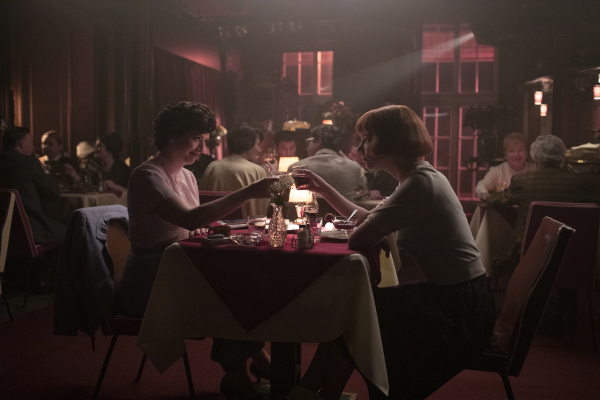
Remember those old novelty Magic Sea Monkeys? “Put ‘em in water and watch them grow!” Some might say there was a sea monkey-like quality to my approach to my minor role as a specialty extra. On every film, there can be a creeping effect known as “movie by department.” It’s each head of department’s job to view the film through the lens of their contributions to telling the story. But sometimes this solipsism can get carried to extremes, as when the designer complains the actors are blocking his beautiful wallpaper, or when the car wrangler decides on a stylish vintage standard gear car for an actor who doesn’t know how to shift. The same often goes for actors in minor supporting roles, who map out an elaborate back story and emotional arc for their character even if they only have a few lines in the movie.
It was in this hallowed tradition that I came to decide that my voiceless, nameless character, the piano player at Tobey’s Restaurant, actually was Tobey, the owner of the restaurant, who performed nightly at his own joint. To add insult to injury, I texted Scott an elaborate backstory for Tobey: Korean War vet, reformed junkie, bought a skid-row dump on the G.I. Bill and started a jazz bar. Watched the neighborhood clean up and change around him, added the restaurant, brought in a new clientele, but never lost his place at the keyboard, even though his kind of cool jazz was, by the ’60s, getting a bit long in the tooth. “You’ve gotta be fucking kidding me” was Scott’s affectionate response. Undeterred, I found two willing collaborators to indulge my fantasy in our wonderful costume designer Gabrielle Binder and our make-up artist and, as it turns out, handmade beard expert, Daniel Parker, who had fun creating the louche, shadowy look of Tobey.
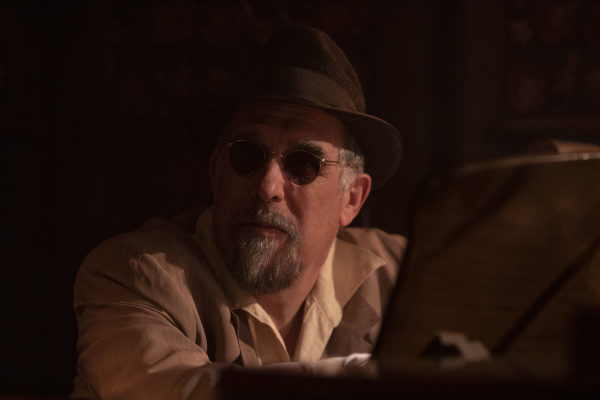
If the story ended here, it wouldn’t be worth telling. But there was another surprise in store for all of us that was the cherry on top of the frosting on top of the cake. Elia Kazan once said, “Every movie that is successful has a small miracle in it.” Often, our favorite moments in any show are unplanned … happy accidents … like when Ratso Rizzo is almost run over by that New York cabbie and screams, “Hey, I’m walking here!” I remember when Anthony Minghella had been invited to an arts festival on the island of Capri sometime before we started filming The Talented Mr. Ripley. The talent booked for the occasion was the popular Italian singer and television personality Fiorello, who entertained the crowd, including Minghella, with a rousing version of an old Italian rock and roll number from the ’50s, “Tu Vuo Fa L’Americano.” I’m sure the last thing Anthony expected when he accepted the last-minute invitation to attend this event was that he would stumble upon a new character, scene and musical number to add to his screenplay, one that would go on to become one of the most popular and memorable scenes in the film. But man plans, God laughs, and when accidents happen, producers are wise to listen.
The super-talented Marielle Heller could do just about anything the role of Alma required, except Alma Wheatley was a woman who had to abandon her dreams of a career as a concert pianist, and Marielle had never played the piano. After taking some lessons in New York before traveling to location, and a few more after her arrival in Berlin, she and Scott decided the safest and most comfortable route to capture a convincing performance of Eric Satie’s “Gnossienne No. 1” on camera was to use the tried and true method of hiring a hand double.

Luckily, our German second assistant director’s half-Finnish sister was a soon-to-graduate music student at the Academy in Leipzig. Her name was Anna, she played the piano, and most importantly, when she came to the studio to audition her hands as a good-enough match for Marielle’s hands, the hands got the part. The work was more technical than musical and, over the course of two days, she sat quietly at the keyboard while repeatedly miming her confident hand movements to playback of the hypnotic Satie recordings, as Scott and Steven choreographed their shots for the various scenes that involved Alma at her piano. We hadn’t formally met, so on her last day I joined her as she sat alone eating lunch at the tables and benches outside our Spandau soundstage on a sunny afternoon, to ask her about her music, and what she did in real life when she wasn’t hiring out her hands to pretend to play the piano. She told me that while she was majoring in composition at school, her true passion was as a singer-songwriter. She said she had her own band, which had already put out a few records, and in fact they were having an upcoming concert at a Berlin club to celebrate the release of their newest CD.
One of the most fun surprises I’ve had in a long time was standing in the Badehaus the following week as the lights dimmed and the band came on and our quiet, shy hand double metamorphosed into Anna Hauss, the lead singer of Still in the Woods, a student-age soul-jazz quartet with a guest horn section. They proceeded to tear the roof off the sucker with a set of original songs that were tightly composed and arranged, deeply groovy, and fronted by this charismatic Finnish-German young woman who was dressed in Super Mario Luigi-style coveralls and could sing like Erykah Badu. Mind = blown. Of course, my Sea Monkey brain couldn’t wait to tell Scott about my discovery. I texted him right after the show. “Hey, that second scene in Tobey’s Restaurant, the one where Beth is there alone in her cups, wouldn’t it be cool if Tobey had added a torch singer to his floor show, and we created an original jazz song that fit the mood of the moment. I found this incredible singer, actually it’s Anna, our hand double, and we’ve got to find a way to put her into the show.” His loving reply: “You must be out of your fucking mind.” Knowing him as well as I did, I took it as an enthusiastic thumbs-up. Knowing me as well as he did, he knew that I would.
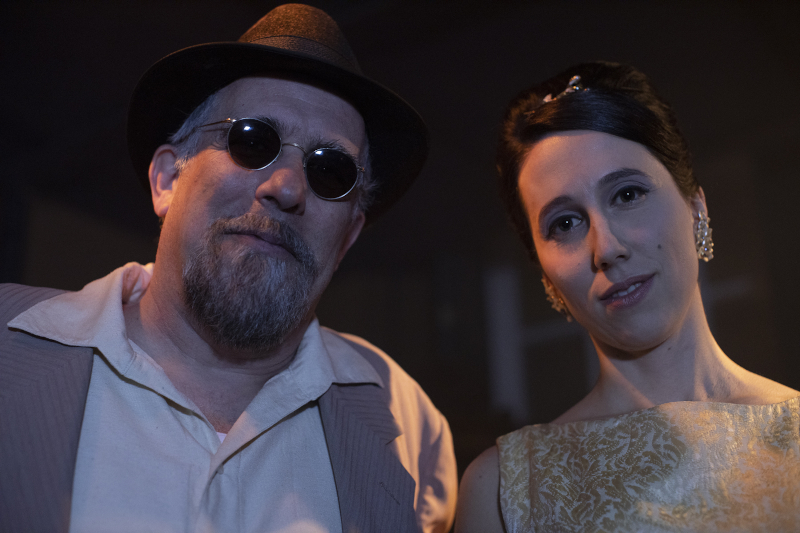
Anna’s boyfriend Robert was the actual piano player in her band, and at lunch over some Thai food near his music conservatory in Berlin the next day, I told them what I had in mind. I had written some lyrics for a ballad that I imagined being sung in the style of Julie London or Eartha Kitt, with music that was in the great American songbook tradition of composers like Cole Porter or Jerome Kern, or one of my favorites, Jimmy Van Heusen. They liked the lyrics and agreed to sketch something out and get back together with me to rehearse and put it on its feet. I told them there was no guarantee it would wind up in the show, but that Scott was open to hearing a demo of the song, and if he liked it, using it for the scene. If someone had said at that moment that I looked like a character out of one of those old “My uncle’s got a barn, let’s put on a show” movies like Strike Up the Band or Don’t Knock the Rock, they wouldn’t be far off.
The JRS recording studio was located in a nondescript building in Prenzlauer-Berg. The entrance was off a vacant lot and through a back door and up several flights of stairs to what looked like the door to the modest apartment where the cleaning lady lived in Fassbinder’s Ali: Fear Eats the Soul. But, staying consistent with the more-than-meets-the-eye theme of this whole adventure, it instead opened into a hi-tech modern state-of-the art suite of rooms – a high-ceilinged studio with a grand piano and a glass window looking into a control booth with a world-class mixing board. Anna was nervous at first, but after a few takes her wonderful voice slowly settled in to its unusual combination of still-in-the-woods innocence and wise-beyond-her years experience, while Robert improvised a lovely piano introduction to the song that he then replayed flawlessly for each take. Before I could even finish my currywurst, our jazz ballad “I Can’t Remember Love” was laid down, mastered and about to be judged: ready for prime-time or for the remainder bin?
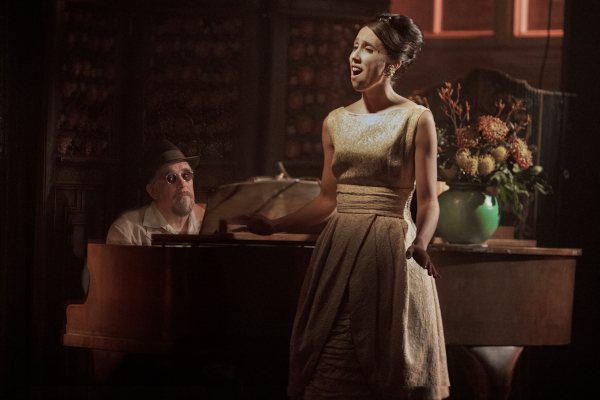
Upon its release, The Queen’s Gambit was rated 100% fresh on Rotten Tomatoes and the show went on to improbably become the most watched limited series in Netflix history. Chess set sales, chess club memberships and online chess sites experienced unprecedented growth around the world. Walter Tevis’ novel returned to the New York Times best-seller list after 37 years. Anya Taylor-Joy’s unforgettable performance as Beth Harmon made her a huge star and she and Scott Frank’s writing and direction and the series itself dominated the awards season.
“Adjournment,” episode six of the show, featured a brief but memorable scene in Tobey’s Restaurant. In one elegant take, the gliding camera follows the waiter to and from Beth’s table, where she orders a Gibson martini in honor of the memory of Alma. As we take in the room, our attention is drawn to an elegant singer in a wrap-around dress and a beehive hairdo and a bearded hipster in a silk jacket wearing Thelonious Monk sunglasses at the piano, playing a melancholy tune of love and loss, a song that now has more than three million streams and counting on Spotify.
I remember as a child
I played with kings and queens
I remember growing older
putting away childish things
I remember you
but I can’t remember love
when I do, when I do
Timing is everything. Like Anya, Tobey was the role I was born to play. Even my mom didn’t recognize me when she watched the show the first time. The irony was not lost on me as I mimed on camera to Robert Wienröder’s sparkling arpeggios, getting to pretend they were my own.
I was the hand double.
The above is an excerpt from My Life in Space: Stories of a Hollywood Outlier, a forthcoming memoir by William Horberg. Featured image shows Anya Taylor-Joy with William Horberg on the set of The Queen’s Gambit. (Image by Phil Bray / Netflix.)



